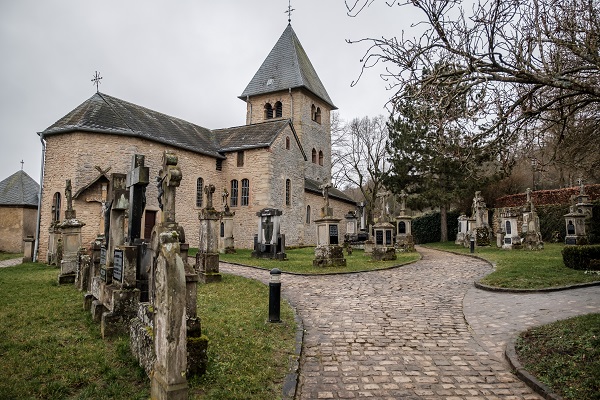 Chapel of Girsterklaus;
Credit: © Pancake! Photographie
Chapel of Girsterklaus;
Credit: © Pancake! Photographie
Chronicle.lu has teamed up with local author and tour guide David Heal of Luxembourg Battles for a new historical series.
Based on David Heal's extensive research spanning several decades (and documented in the form of place-name index cards), the series aims to present interesting local historical events and facts linked to places in (and around) Luxembourg.
First up is a look at the history of Girst and Girsterklaus. Most people confuse these two places, but they are in fact, just that, two places, and not, overly close together at that.
Girsterklaus is a hamlet to the south of Rosport, and Girst a small village south of that.
Girst dates from at least 992 when it was the oldest possession of the Abbey St Maximin, Trier, the abbey which was responsible for giving land to Siegfried on which he built his castle and founded the city of Luxembourg. Based on David's research, there was never any religious establishment here. At that time, the name was “Kirst”, this being the Celtic word for a cherry tree. There were, presumably, a lot in the area or maybe an orchard.
Girsterklaus is perhaps a more interesting place even though it is only a hamlet. The church here is a particular highlight. It has several parts of medieval murals, although there seems to be a damp problem in the church as a whole. These murals are not as complete as those on the church at Rindschleiden, nor even as in such good condition as those in the church at Leithum. It was originally dedicated to Walburgh who was renowned for treating eye problems. They still have a procession of the Holy Virgin on the Sunday after 15 August, a procession which has been held since 1328.
The cemetery around the church is interesting because there are a couple of World War Two casualty graves or rather mentions on family tombstones and on the village memorial.
During his research, David Heal found the names of eight people from Girst and Girsterklaus who were killed during World War Two. Two died on the Eastern Front as “Enrolés de Force” (forced recruits), one was executed (possibly for desertion) and three died of wounds received during the Battle of the Bulge. For two, David has found no reasons for their deaths, but has guessed they were also “Enrolés de Force”.
According to David, one strange thing is that although he has these names of people killed and whom were from Girst, they are not all mentioned on the local war memorial. One is on the Differdange memorial, one is buried at Lamadeleine, and one is on no memorial of which he has knowledge.
And that brings us to what happened during the Battle of the Bulge. The short answer to this is nothing. The battle had its most southerly flank in fighting for the villages of Osweiler and Dickweiler. These two villages were only involved because the attack was intended to close the road from Wasserbillig to Echternach and thus prevent a flank attack. Unfortunately for the Germans, the two villages had been designated as rest areas and so when they arrived they were full of GIs.
Those from Girst killed during the battle were hit by shrapnel from shells which overshot or were badly aimed, concluded David.








